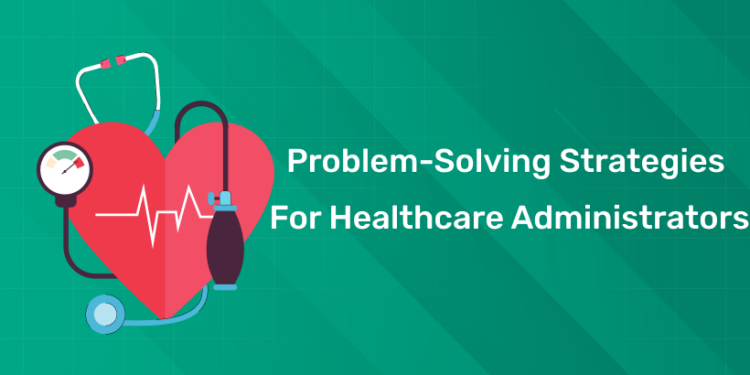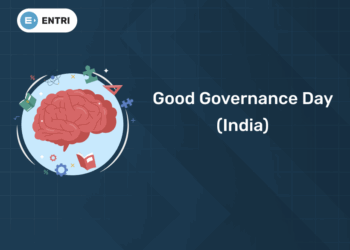Table of Contents
Healthcare administration is a management job that requires precision and care. Healthcare administrators need to have strong problem-solving, leadership, and communication skills. They are responsible for the daily operations, finance, polices, staff, records, quality of patient care, etc. If you want to understand problem-solving strategies for healthcare administrators, you have come to the right page! In this article, we will learn about healthcare administration, problem-solving strategies for healthcare administrators, their benefits, how to implement them, etc.
Explore Your Future in Hospital Administration! Enroll now
Introduction
Healthcare administrators face numerous challenges daily, from financial constraints to staff shortages and regulatory compliance. Effective problem-solving strategies are crucial to maintaining operational efficiency, ensuring patient safety, and optimizing resources. Administrators must employ structured methods to address problems systematically, reduce errors, and implement sustainable solutions. These strategies enhance decision-making, improve collaboration, and foster continuous improvements in healthcare institutions. This article outlines key problem-solving strategies for healthcare administrators and how they can be effectively implemented. The figure below depicts the key aspects of problem-solving in healthcare administration.
Key Aspects of Problem-Solving in Healthcare Administration
Problem-Solving Strategies for Healthcare Administrators
1: What is the primary role of a hospital administrator?
1. Root Cause Analysis (RCA)
- Identify and analyze underlying problems rather than just addressing symptoms.
- Use tools like the 5 Whys Method and Fishbone Diagrams to explore causes.
- Gather feedback from stakeholders to validate findings.
- Implement corrective measures and track progress.
- Establish preventive measures to avoid recurrence.
| Benefits | Implementation |
|---|---|
| Improves patient safety | Identify the core issue through data analysis |
| Reduces operational errors | Gather feedback from staff and stakeholders |
| Enhances decision-making | Implement corrective actions and monitor progress |
2. Lean Management Principles
- Focus on eliminating waste and improving efficiency.
- Map workflows to identify inefficiencies.
- Engage employees in continuous improvement.
- Implement quick and effective solutions using the PDCA Cycle (Plan, Do, Check, Act).
- Use performance metrics to track progress.
| Benefits | Implementation |
| Reduces operational costs | Map hospital workflows to identify inefficiencies |
| Enhances staff productivity | Implement continuous process improvements |
| Improves resource allocation | Use data to track and optimize hospital performance |
3. Six Sigma Methodology
- Utilize data-driven strategies to minimize errors.
- Apply the DMAIC Approach (Define, Measure, Analyze, Improve, Control).
- Train staff in Six Sigma techniques.
- Monitor key performance indicators (KPIs).
- Create standardized protocols to maintain quality.
| Benefits | Implementation |
| Reduces medical errors | Define problems and collect relevant data |
| Improves quality control | Analyze root causes and implement improvements |
| Enhances service delivery | Monitor effectiveness and adjust strategies accordingly |
4. Strategic Decision-Making Models
- Utilize structured frameworks for making critical decisions.
- Apply SWOT Analysis (Strengths, Weaknesses, Opportunities, Threats).
- Use Decision Matrices to evaluate alternatives.
- Rely on Scenario Planning for future problem anticipation.
- Develop strategies based on evidence-based outcomes.
| Benefits | Implementation |
| Improves decision quality | Apply structured frameworks like SWOT analysis |
| Helps anticipate future challenges | Use scenario planning for proactive solutions |
| Enhances risk management | Utilize decision matrices for evaluating options |
5. Crisis Management Planning
- Prepare hospitals for emergencies, including pandemics and cyberattacks.
- Develop crisis response teams and action plans.
- Conduct regular drills and training.
- Establish emergency communication channels.
- Maintain an inventory of essential supplies.
| Benefits | Implementation |
| Improves emergency readiness | Develop response teams and action plans |
| Reduces hospital disruptions | Conduct regular drills and training |
| Enhances patient safety | Establish communication channels and stockpile supplies |
6. Data Analytics for Predictive Insights
- Utilize big data to anticipate healthcare trends.
- Leverage AI-driven diagnostics for early disease detection.
- Analyze past hospital trends for optimized staffing.
- Implement real-time monitoring systems.
- Ensure predictive analytics aid long-term planning.
| Benefits | Implementation |
| Enhances resource planning | Use big data to anticipate healthcare trends |
| Improves diagnostic accuracy | Leverage AI-driven diagnostics |
| Optimizes staffing | Analyze past trends for better workforce planning |
7. Interdepartmental Collaboration Strategies
- Strengthen communication between hospital units.
- Conduct cross-departmental workshops.
- Use centralized digital platforms for coordination.
- Encourage teamwork-based problem-solving.
- Implement shared goals to enhance workflow efficiency.
| Benefits | Implementation |
|---|---|
| Enhances communication | Strengthen interdepartmental meetings |
| Reduces errors | Use centralized digital platforms |
| Boosts efficiency | Implement teamwork-based problem-solving |
8. Financial Optimization Strategies
- Implement automated billing and expense tracking.
- Conduct regular financial audits.
- Optimize procurement and budget allocation.
- Reduce wasteful expenditures.
- Invest in cost-effective technologies.
| Benefits | Implementation |
|---|---|
| Reduces financial waste | Conduct regular audits and track expenses |
| Improves budget accuracy | Optimize procurement and resource allocation |
| Enhances profitability | Invest in cost-effective technologies |
Explore Your Future in Hospital Administration! Enroll now
9. Regulatory Compliance and Risk Management
- Keep up-to-date with healthcare regulations.
- Train staff in compliance best practices.
- Conduct internal audits.
- Implement risk assessment frameworks.
- Ensure patient data security.
| Benefits | Implementation |
| Ensures legal compliance | Keep up-to-date with healthcare regulations |
| Reduces liability risks | Conduct internal audits and staff training |
| Improves patient data security | Implement risk assessment frameworks |
10. Technology Integration in Problem-Solving
- Automate routine processes to enhance efficiency.
- Use AI-powered scheduling tools.
- Integrate machine-learning algorithms in diagnostics.
- Employ robotics for repetitive administrative tasks.
- Implement telemedicine solutions.
| Benefits | Implementation |
| Enhances efficiency | Automate routine processes with AI |
| Reduces administrative burden | Use robotics for repetitive tasks |
| Expands accessibility | Implement telemedicine solutions |
11. Workforce Training and Development
- Offer regular training programs.
- Encourage leadership development.
- Use simulation-based learning.
- Conduct skills gap assessments.
- Foster a culture of continuous education.
| Benefits | Implementation |
| Increases staff competency | Offer regular training programs |
| Develops leadership skills | Encourage continuous education and mentorship |
| Reduces skill gaps | Conduct periodic assessments |
12. Process Standardization for Efficiency
- Develop standardized protocols for procedures.
- Reduce variability in hospital operations.
- Ensure consistency across departments.
- Utilize checklists to minimize errors.
- Monitor compliance through periodic evaluations.
| Benefits | Implementation |
| Improves consistency | Develop standardized protocols for procedures |
| Reduces errors | Utilize checklists and compliance monitoring |
| Enhances quality control | Conduct periodic evaluations |
13. Patient-Centered Care Strategies
- Personalize treatment plans.
- Enhance doctor-patient communication.
- Collect and act on patient feedback.
- Implement shared decision-making practices.
- Improve the hospital environment for patient comfort.
| Benefits | Implementation |
| Improves patient outcomes | Personalize treatment plans |
| Enhances communication | Strengthen doctor-patient interactions |
| Boosts patient satisfaction | Act on feedback and improve hospital experience |
14. Supply Chain Optimization
- Use automated tracking for inventory management.
- Optimize vendor partnerships.
- Reduce procurement delays.
- Implement just-in-time supply management.
- Conduct regular inventory audits.
| Benefits | Implementation |
| Reduces supply costs | Optimize vendor partnerships |
| Minimizes procurement delays | Implement just-in-time inventory management |
| Enhances tracking efficiency | Use automated tracking systems |
15. Performance Measurement and Benchmarking
- Establish hospital-wide performance metrics.
- Use benchmarking to compare industry standards.
- Conduct employee performance evaluations.
- Track patient satisfaction scores.
- Continuously adapt based on performance data.
| Benefits | Implementation |
| Improves hospital efficiency | Establish key performance metrics |
| Enhances service quality | Compare industry standards and adapt strategies |
| Boosts staff accountability | Conduct regular performance evaluations |
Hospital Administration Course with Assured Career Growth
Hospital Administration Course by Entri App: Master essential healthcare management skills, gain certification, and secure top roles in leading hospitals
Join Now!Conclusion
Healthcare administrators must continuously adopt effective problem-solving strategies to tackle daily challenges. Using structured techniques such as root cause analysis, lean management, and predictive analytics improves efficiency and patient outcomes. Interdepartmental collaboration, crisis management planning, and compliance monitoring ensure smooth hospital operations. Financial optimization and technological integration further enhance long-term sustainability. By implementing these strategies, healthcare administrators can create resilient, patient-focused healthcare systems that deliver quality services efficiently.
Explore Your Future in Hospital Administration! Enroll now
Hospital Administration Course with Assured Career Growth
Hospital Administration Course by Entri App: Master essential healthcare management skills, gain certification, and secure top roles in leading hospitals
Join Now!Frequently Asked Questions
Why is problem-solving crucial for healthcare administrators?
Problem-solving helps administrators maintain operational efficiency, ensure patient safety, and optimize resources. It reduces errors, enhances collaboration, and improves decision-making. Addressing challenges proactively prevents crises and enhances hospital performance. Structured strategies like Lean Management and Six Sigma help streamline operations. A problem-solving approach fosters continuous improvement in healthcare institutions.
How can root cause analysis (RCA) improve healthcare management?
RCA helps identify underlying issues rather than just treating symptoms. It uses tools like the 5 Whys Method and Fishbone Diagrams to explore causes. Addressing root problems improves patient safety and reduces operational errors. Feedback from staff and stakeholders ensures a well-rounded analysis. Preventive measures can then be implemented to avoid recurrence.
What are the benefits of Lean Management in healthcare administration?
Lean Management focuses on eliminating waste and improving efficiency. It maps workflows to identify inefficiencies and engages employees in continuous improvement. The PDCA Cycle (Plan, Do, Check, Act) ensures quick and effective solutions. Using performance metrics helps track improvements and optimize resource allocation. This approach enhances productivity while reducing costs.
How does Six Sigma reduce medical errors in hospitals?
Six Sigma uses a data-driven approach to minimize errors and improve quality. The DMAIC methodology (Define, Measure, Analyze, Improve, Control) ensures a systematic process. Training staff in Six Sigma techniques helps maintain consistency in service delivery. Monitoring Key Performance Indicators (KPIs) ensures ongoing quality control. Implementing standardized protocols leads to fewer mistakes and improved patient outcomes.
What role does technology play in solving healthcare administration challenges?
Technology automates routine processes, reducing administrative burden. AI-powered analytics help predict trends and improve decision-making. Robotics and machine learning enhance diagnostics and hospital efficiency. Telemedicine expands accessibility and improves patient care. Digital platforms streamline communication and workflow management.
How can healthcare administrators optimize financial management?
Financial optimization involves automated billing, expense tracking, and resource allocation. Regular audits help identify cost-saving opportunities. Reducing wasteful expenditures and optimizing procurement lower operational costs. Investing in cost-effective technologies enhances long-term savings. A well-planned budget ensures financial stability in healthcare institutions.
What are effective crisis management strategies for healthcare administrators?
Developing crisis response teams ensures preparedness for emergencies. Regular drills and training help staff handle situations efficiently. Establishing emergency communication channels ensures rapid coordination. Maintaining essential supplies prevents shortages during crises. A well-structured response plan reduces disruptions and improves patient safety.
How can interdepartmental collaboration improve hospital efficiency?
Stronger communication between hospital units reduces errors and miscommunication. Cross-departmental workshops promote teamwork and knowledge sharing. Digital platforms centralize coordination, improving workflow efficiency. Shared goals create a unified approach to problem-solving. Effective collaboration leads to better patient care and operational efficiency.
What strategies help healthcare administrators maintain regulatory compliance?
Regular audits ensure adherence to healthcare laws and regulations. Staff training helps maintain compliance best practices. Implementing risk assessment frameworks reduces potential violations. Keeping up with evolving regulations ensures hospitals operate legally. Secure patient data management prevents legal and ethical issues.
How does patient-centered care improve healthcare administration?
Personalized treatment plans improve patient outcomes and satisfaction. Strong doctor-patient communication enhances trust and engagement. Collecting and acting on patient feedback ensures continuous improvement. Shared decision-making leads to better healthcare experiences. A comfortable hospital environment positively impacts recovery and well-being.













